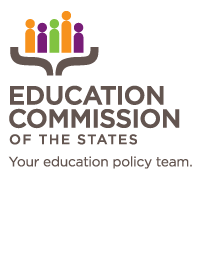In August, the Tennessee Department of Education launched a competitive grant program to facilitate the development and expansion of Grow Your Own (GYO) teacher programs across the state. The $2 million dollar initiative aims to increase access to the teaching profession by removing financial barriers and promoting partnerships between educator preparation programs (EPPs) and local educational agencies (LEAs). The program is designed to help boost interest in the teaching profession and increase the racial diversity of the state’s educator workforce.
Tennessee’s efforts to leverage GYO programs as a strategy for developing high-retention pathways into teaching is grounded in research that homegrown teachers have higher rates of retention and that GYO programs remove access and success barriers in teacher preparation programs. GYO programs can be a powerful mechanism for developing well-prepared teachers who both reflect the communities they work in and are knowledgeable about the needs of students and families.
New America’s 50-state scan of GYO policies and programs reveals GYO to be a widely used strategy but one that is highly localized with variability in program design. We found programs for high school students, paraeducators, community members, non-certified school staff, or some combination across 47 states plus the District of Columbia.
GYO programs for high school students include career and technical education courses that provide exposure to careers in teaching and internships in local schools. Paraeducator pathways often include scholarships, partnerships between EPPs and LEAs, or career ladders that offer financial support and mentoring. The number of program types offered across states varies widely. Seven states (FL, ID, LA, NH, OH, RI and WV) have one type of GYO program, and nine states (AR, CA, CO, KS, MN, MS, NY, OR and SC) have more than five program types.
Twenty-eight states have a GYO-focused policy and 18 states fund some type of GYO program. For example, Maryland’s Teaching Fellows Scholarship is funded through state legislation and provides tuition and housing support to state residents who commit to working in an under-resourced school.
Eight states (CA, IL, MA, MN, NY, TN, TX and WA) offer a competitive grant program designed to incentivize school district and educator preparation partnerships to develop and implement GYO programs. New America’s latest report examines the benefits of these competitive grant programs and found that state funding is strengthening partnerships within and across GYO programs, improving GYO initiatives’ data use and promoting sustainable funding models. Competitive state funding is helping GYO programs nationwide expand access to the types of paid, supervised on-the-job experiences that are essential to high-quality teacher preparation.
These grant programs have helped states cultivate more diverse workforces. Consider California, which funded teaching credentials and, in some cases, associate and bachelor’s degrees for over 2,000 paraprofessionals through its now defunct California School Paraprofessional Teacher Training Program. In its last cohort, 48% of candidates participating in state funded GYO programs were candidates of color and 45% were bilingual, which is a more diverse group than California’s teaching workforce. This success can be attributed to the focus on paraeducators, a group that tends to closely reflect student demographics.
Fortunately, the state has reinvested in this strategy: In 2016 and 2017, the legislature provided an additional $45 million to support paraprofessionals and other school staff in earning their teaching certifications through the California Classified School Employee Credentialing Program. This latest program has helped credential over 200 teachers and has over 2,000 in the pipeline, and the majority of them are Black, Latinx or Asian.
States and districts are facing deep budget cuts, which may lead to reductions in spending on GYO programs. However, these examples offer a glimmer of hope for continued investments in GYO by leveraging federal and state funding sources.




